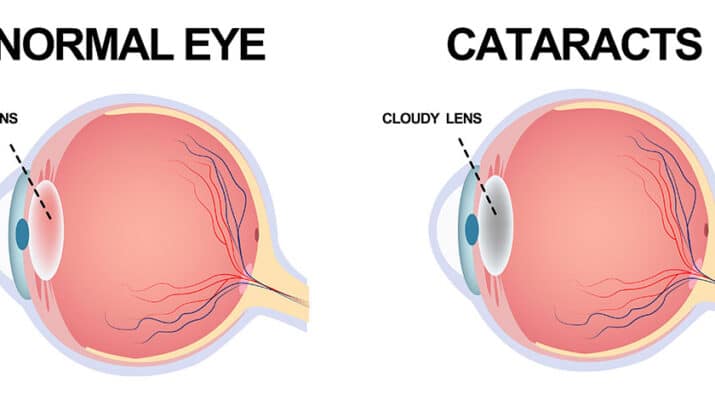By Deborah Jeanne Sergeant
The number of Americans with cataracts is expected to increase from 24.4 million to nearly 50 million, according to the National Eye Institute.
Cataract causes hazy, yellowed and blurred vision. Any change in vision should prompt a visit to an eyecare professional who can diagnose what is happening and recommend the next step. For many people with cataract, that can mean surgery.
Years ago, many people with cataract were cautioned to wait on surgery until the lenses were “ripe” before undergoing the surgery. However, the technology and procedure has improved dramatically. There is no need to wait until the vision becomes even worse if the patient desires to undergo cataracts surgery.
According to the Harvard Medical School, nearly all cataract patients experience no negative outcomes.
While any surgery carries some risk, cataract surgery risk is so low that the commonplace procedure is ordinarily offered in an out-patient setting with minimal sedation. Patients are ready to go home the same day.
Cataract is a condition that forms gradually over time. Typically, aging lenses become cloudy. The only option to correct it is lens replacement—cataract surgery.
“There can always be complications, but they are rare,” said Lori Youngman, doctor of optometry with Harbor Eye Associates in Oswego. “The success rate for cataract surgery is wonderful because most patients have improved vision and do great. The risk of a complication is less than 1%. They see well, function and are happy.”
Patients typically receive a local anesthesia and sedation and remain awake so they can respond to their surgeon’s directions. Surgeons use an ultrasound probe to break up the lens so it can be removed with suction. Only a tiny incision is needed.
The surgeon replaces the cataract-affected lens with a synthetic lens that will stay within the eye. It is not removable like a contact lens. Some patients choose monofocal or multifocal lenses or lenses that correct vision issues like astigmatism. These can improve vision, but it is not uncommon for patients to still require glasses after healing.
The procedure takes about 15 minutes. The pre-surgery preparation and the time spent recovering from the sedation takes longer than the procedure. After one to three months, patients should be completely healed and can get a new pair of prescription glasses as needed. Some require only reading glasses, depending upon the lens they selected and how their eyes responded to the procedure.
Patients should be able to follow commands and remain still. Those who cannot stay still may receive general anesthesia. They should also be medically stable in general.
After surgery, patients can resume most activities, but should not lift heavy objects or swim for a few weeks.
“They will need eye drops four times a day, but that’s only for the first two to four weeks for most patients,” Youngman said.
Because of the risk of complications, each eye is treated individually. Surgeons allow time for healing after the first surgery before doing the second one. But this should not deter those with cataract from seeking the procedure as directed by their provider.
“With any surgery, there is risk,” said Christine Coward, ophthalmology specialist with Rochester Regional Health. “You can have inflammation or swelling of the front part of the eye which can limit your vision after cataract surgery that can go away with time and medications we give. But the first thing that people should do when suffering from symptoms is to get checked out by ophthalmology services.”
But those issues can take up to three weeks to resolve, according to Coward.

